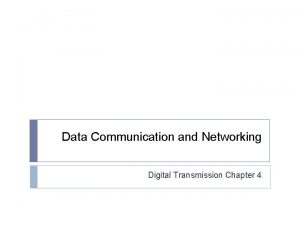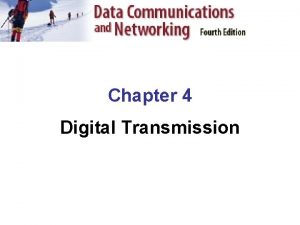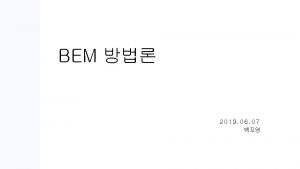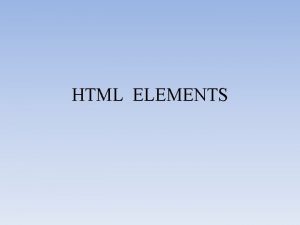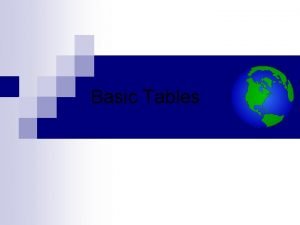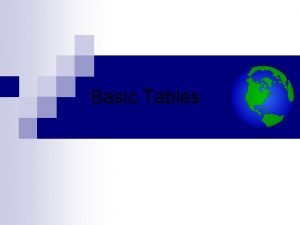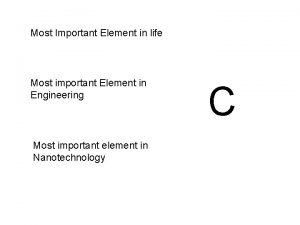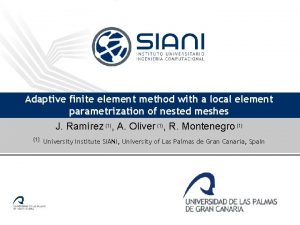The Data Element 1 The Data Element Data












- Slides: 12

The Data Element 1

The Data Element • Data type: A description of the set of values and the basic set of operations that can be applied to values of the type. • Strong typing: The requirement that only a value of the proper type can be stored into a variable. 2

Data Types • • • Integer numbers Real numbers Characters Boolean values Strings 3

Data Types: Integers • The range varies depending upon how many bytes are assigned to represent an integer value. • Some high-level languages provide several integer types of different sizes. • Operations that can be applied to integers are the standard arithmetic and relational operations. 4

Data Types: Reals • Like the integer data type, the range varies depending on the number of bytes assigned to represent a real number. • Many high-level languages have two sizes of real numbers. • The operations that can be applied to real numbers are the same as those that can be applied to integer numbers. 5

Data Types: Characters • It takes one byte to represent characters in the ASCII character set. • Two bytes represent each character in the Unicode character set. • The English alphabet is represented in ASCII, which is a subset of Unicode. 6

Data Types: Characters • Applying arithmetic operations to characters does not make much sense. • Comparing characters does make sense, so the relational operators can be applied to characters. • The meanings of “less than” and “greater than” when applied to characters are “comes before” and “comes after” in the character set. 7

Data Types: Boolean • The Boolean data type consists of two values: true and false. • Not all high-level languages support the Boolean data type. 8

Data Types: Strings • A string is a sequence of characters considered as one data value. • For example: “This is a string. ” – Contains 17 characters: one uppercase letter, 12 lowercase letters, three blanks, and a dot. • The operations defined on strings vary from language to language. – They include concatenation of strings and comparison of strings in terms of lexicographic order. 9

Declarations • Declaration: A statement that associates an identifier with a variable, an action, or some other entity within the language that can be given a name. • The programmer can then refer to that item by its name. 10

Declarations • Reserved word: A word in a language that has special meaning. These words CANNOT be declared to be anything else. • Some languages are NOT case-sensitive: UPPERCASE and lowercase letters are considered the same. 11

Assignment statement • Assignment statement: An action statement (not a declaration) that says to evaluate the expression on the right-hand side of the symbol and store that value into the place named on the left-hand side. • Most manipulation of data occurs in assignments. 12
 Difference between signal element and data element
Difference between signal element and data element Signal element vs data element
Signal element vs data element Hình ảnh bộ gõ cơ thể búng tay
Hình ảnh bộ gõ cơ thể búng tay Lp html
Lp html Bổ thể
Bổ thể Tỉ lệ cơ thể trẻ em
Tỉ lệ cơ thể trẻ em Voi kéo gỗ như thế nào
Voi kéo gỗ như thế nào Glasgow thang điểm
Glasgow thang điểm Chúa yêu trần thế alleluia
Chúa yêu trần thế alleluia Kể tên các môn thể thao
Kể tên các môn thể thao Thế nào là hệ số cao nhất
Thế nào là hệ số cao nhất Các châu lục và đại dương trên thế giới
Các châu lục và đại dương trên thế giới Công của trọng lực
Công của trọng lực
